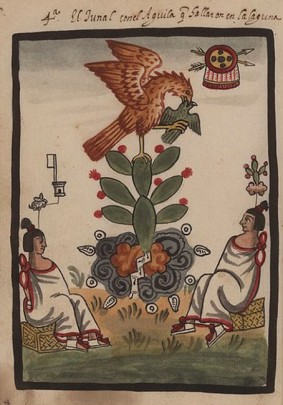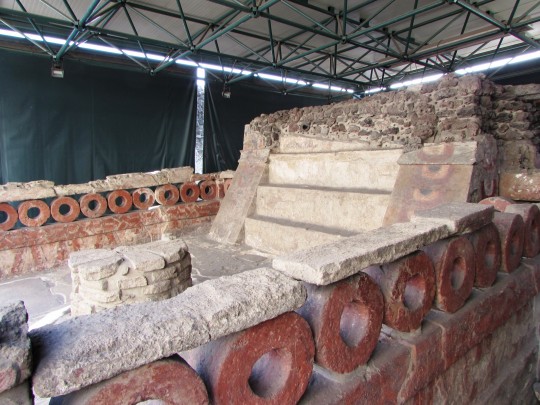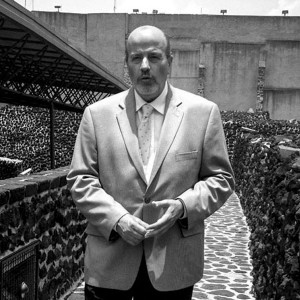Dedicated to Tlaloc and Huitzilopochtli, the Templo Mayor takes us back to the origins of Tenochtitlan. According to Mexica traditions, after glimpsing the powerful sign with which their god Huitzilopochtli indicated to them the place in which they were to settle, they made a small and modest shrine to mark the place and make it sacred.
Over time it became the city’s most important building and symbol of Tenochca power.
Given its location, the Templo Mayor acted as a symbolic “navel” and point of convergence in the day-to-day lives of the city’s residents. Such was its importance that it was built at the virtual intersection of the two main causeways that joined the small island to terra firme: the Iztapalapa route (modern-day Pino Suárez and San Antonio Abad streets) to the south, and Tlacopan (now called Guatemala and Tacuba streets) to the west. This led some scholars, such as Alfredo Chavero, Alfred Maudslay, and Manuel Gamio, to infer its true location, and it was Gamio who eventually found the first remains in May 1914.
Furthermore, the Templo Mayor presided over the sacred precinct of Tenochtitlan, the very heart of the city where people would gather to celebrate religious feast days. These were moments mainly to commemorate events that took place during mythical times and that gave everything its reason for existence: the earth, the sun, the moon, man and corn, among other things. The portentous birth of Huitzilopochtli on the hill of Coatepec, for example, was marked on the “panquetzaliztli”—a twenty-day period—this explains why the circular monolith that represents his sister Coyolxauhqui was found at the bottom of the building’s steps: according to myth, she was vanquished by him shortly after he had emerged from the belly of Coatlicue.
Some of the surrounding buildings—such as the two red temples dedicated to the god Xochipilli, the tzompantli altar and the Casa de las Águilas ("House of Eagles"), where important ceremonies were held for the enthronement of each new Mexica governor or huei tlatoani—provide us with the context of the sacred building complex and confirm the dominance and significance of the Templo Mayor.
It is essential to visit and to preserve this ancient ritual space which reminds Mexicans of their origins and gives meaning to their existence.













